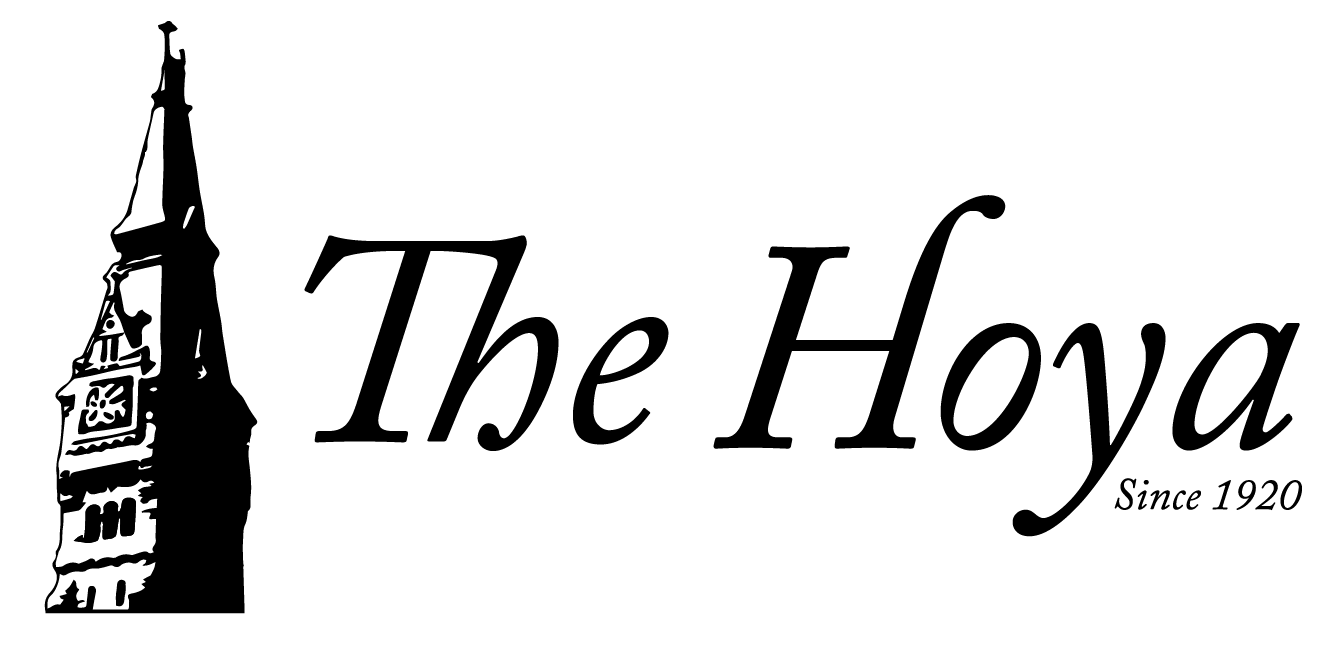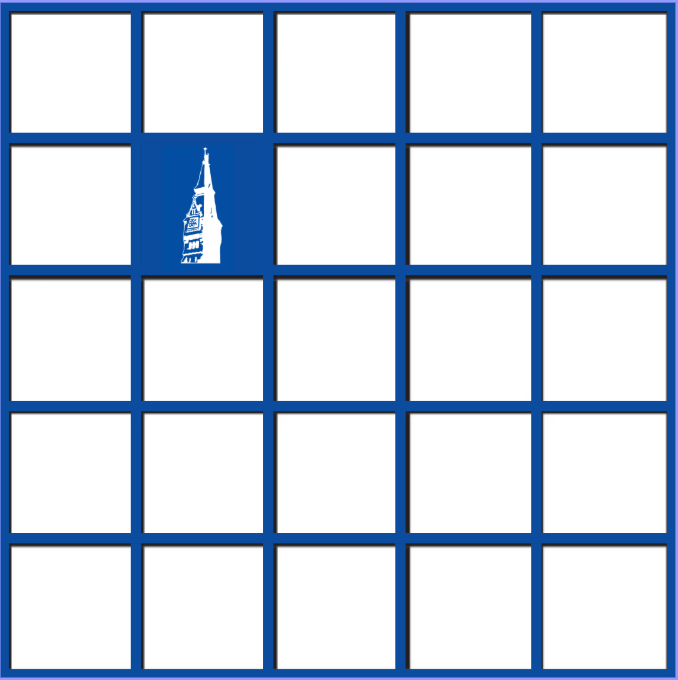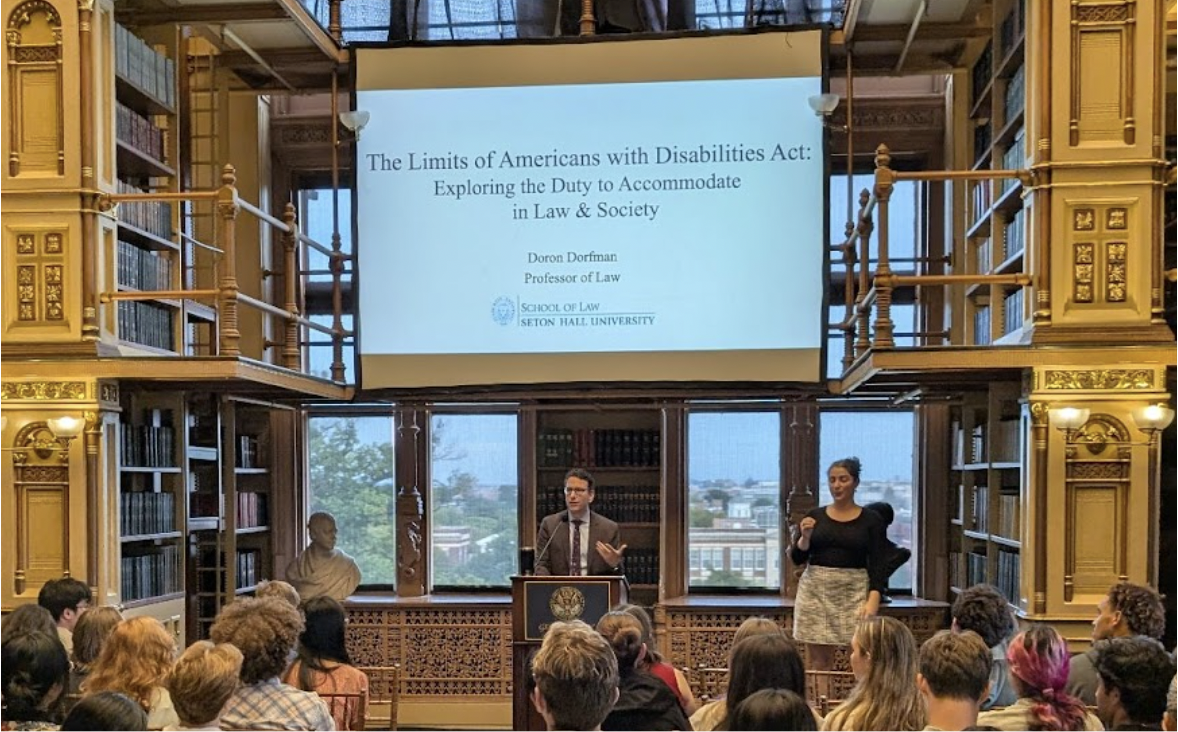Researchers in Georgetown University professor Adam Green’s lab are investigating creativity as a predictor for academic success and the impacts of artificial intelligence (AI) tools on originality.
The primary focus of Georgetown’s Laboratory for Relational Cognition, led by Green, is relational thinking, or how the brain forms connections between two concepts, which is closely related to creativity. Green explained that creativity has many cognitive benefits.
“Creativity has always, firstly, been something that really leads to a lot of enjoyment and well-being, and is very closely tied to mental health, but also it’s a spark for innovation in creating new products or new ways of doing things that at least sometimes can benefit people,” Green said.
Green said the lab’s goal is not only to investigate how the brain forms creative thoughts, but also to discover ways technology can be used to encourage creativity.
“We look at how brains think creatively and how we can help brains learn to think more creatively, but also how we can directly intervene in brain function by stimulating what brains are doing with different technologies, including electrical stimulation, transcranial magnetic stimulation and even focused ultrasound,” Green told The Hoya. “So we’re interested in enhancing creative thinking, helping the brain think more creatively, both in classrooms and in the lab.”
Green said the lab’s work is especially important in light of increasing AI use, as AI often acts as a substitute for creative thinking.
“AI is homogenizing ideas, so it can come up with ideas that are really great, but at scale, those ideas are really similar to each other, and so it’s becoming really evident that we need to help people keep thinking creatively as AI makes a lot of other things, a lot of other kinds of thinking, less valued,” Green told The Hoya. “We need to make sure that the value of human creativity is measurable and is emphasized in ways that both encourage and reward creative thinking.”
A recent survey found that 52% of adults in the United States use AI systems like ChatGPT. Another survey discovered that 86% of college students use AI, with 54% using it on a weekly basis.
Kibum Moon, a doctoral student in the psychology department who works in Green’s lab, investigates the impact of AI on human originality in his work.
Moon said that in a new preprint of recent research, the lab’s findings demonstrate that, while essays written using AI vary linguistically, their ideas have grown increasingly similar.
“We found that essays written after the public release of ChatGPT appear more linguistically diverse, yet the underlying ideas have grown more similar within and between essays,” Moon wrote to The Hoya. “We call this paradoxical homogenization, where linguistic variety masks a narrowing diversity of ideas.”
The lab also found that, although AI models can be useful in the college admissions process by evaluating students’ creativity and other qualities, the models cannot completely evaluate students’ applications, as they tend to be biased towards writing that sounds similar to themselves. One such model is the large language model — a type of AI that can generate human language and perform related communication activities — GPT.
“We found that AI models, particularly the GPT model, show a kind of ‘narcissistic’ tendency, preferring their own writing over text produced by humans or other AI,” Moon wrote. “In the context of college admissions, recognizing and mitigating these biases is essential if we want to use AI responsibly in one of society’s most high-stakes decisions.”
While these results imply that AI can hinder originality, Green’s lab is also using AI as a tool to analyze creativity.
Nola Melvin (CAS ’27), a research assistant in the Green Lab, said her work involves training AI models to examine the creativity in students’ writing to see whether writing can predict educational outcomes.
“Along with another research assistant, I’ve been training large language models (LLMs) to analyze creativity in student writing samples and to predict academic outcomes such as GPA,” Melvin wrote to The Hoya. “We’re exploring how AI can identify subtle patterns in language that correlate with creative thinking, self-expression and academic performance.”
Moon said that after analyzing half a million college application essays using AI, they found that taking creativity into account results in more accurate predictions of future academic success.
“Our results showed that adding creativity to the prediction model improves accuracy beyond what standardized test scores (e.g., SAT, ACT) alone can achieve,” Moon said. “Just as important, creativity scores show much weaker links to socioeconomic background, suggesting this approach could help reduce disparities.”
Melvin said the lab’s work demonstrates that AI can serve as a tool to determine how creativity manifests itself in different contexts and can be trained to notice what current methods do not.
“Our work highlights how artificial intelligence can support psychological assessment and education. If language models can measure creativity reliably, they might eventually help educators and psychologists understand cognitive strengths that aren’t captured by traditional testing,” Melvin wrote.
Moon said the research demonstrates the importance of thinking for oneself, instead of using AI tools in creative endeavors.
“My suggestion is to maintain meta-cognitive awareness and ‘think outside the bots,’” Moon wrote. “Don’t let polished language fool you. Novelty comes from ideas that reach beyond what AI can predict.”





